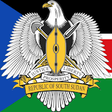Android Apps for Educational Software
Top 3 Educational Software Apps for Android
More Educational Software Apps for Android
dFast App Apk Games
FreeAndroidDemon Slayer: Kimetsu no Yaiba
FreeDemon Slayer: Kimetsu no Yaiba - For the real fans
AndroidChat GPT
FreeThe app that started a new era
AndroidC4droid - C/C++ compiler & IDE
PaidC4droid is the most powerful C/C++ IDE + C/C++ compiler for Android.
Android
ADR PvPI
FreePvPI adverse drug reaction reporting android application.
AndroidBISE SBA
FreeAndroidIRVeinViewer free, simple version of SpectraCam
FreeIRVeinViewer allows you to improve the visibility of the veins, using better penetration of infrared rays through the skin and hemoglobin...
Android
Khristu Mu Nyimbo - Chichewa Hymnal
FreeA user friendly popular Nyanja hymn book, Khristu Mu Nyimbo in your device to move with it wherever you're.
AndroidFlipaClip - Cartoon animation
FreeRelive your childhood and express your creativeness or professional skills in a much cooler way.
AndroidHow To Connect Wifi Without Password
FreeAndroidMDU Rohtak
FreeMaharshi Dayanand University, Rohtak, established in 1976 as a residential University with the objective of promoting inter-disciplinary higher...
AndroidVeinSeek
PaidUpdate: VeinSeek 2 is here.
AndroidFRP Bypass Guide For Android
FreeAndroid
Telugu Bible Plus
FreeTelugu Bible Plus is a Free, Offline, Super Fast app.
Androidwindows7
FreeAndroidWindows 11 Real Simulator
FreeAndroidMultiLing Keyboard
FreeAndroid
RhymeZone Rhyming Dictionary
PaidThe official RhymeZone Android app is a fast, powerful rhyming dictionary and thesaurus that you can use anywhere, even if you're not on the...
AndroidSosoMod app tricks
FreeAndroid
Constitution of Republic of South Sudan
FreeA light and quick reference android app version of the constitution of the Republic of South Sudan, the Supreme law of South Sudan.
Android
ReMojo - Block pornography and track your progress
FreeThe remojo app will help you eliminate pornography from your life.
Android
POSHAN ABHIYAAN - JAN ANDOLAN
FreePoshan Abhiyaan mobile app of Pregnancy, Child Tracking & Health Services Management System which is an online system used as an effective...
Android
CppDroid - C/C++ IDE
FreeCppDroid is simple C/C++ IDE focused on learning programming languages and libraries.
AndroidMangaZone
FreeAndroid